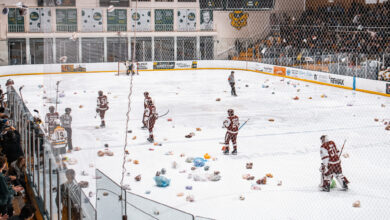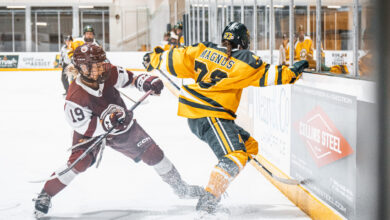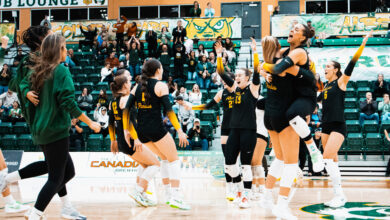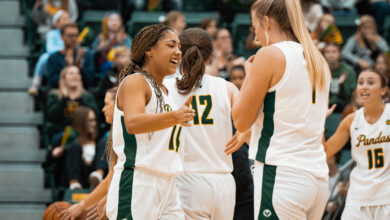Attitudes in sports around brain injuries have changed to ensure health and wellness of athletes
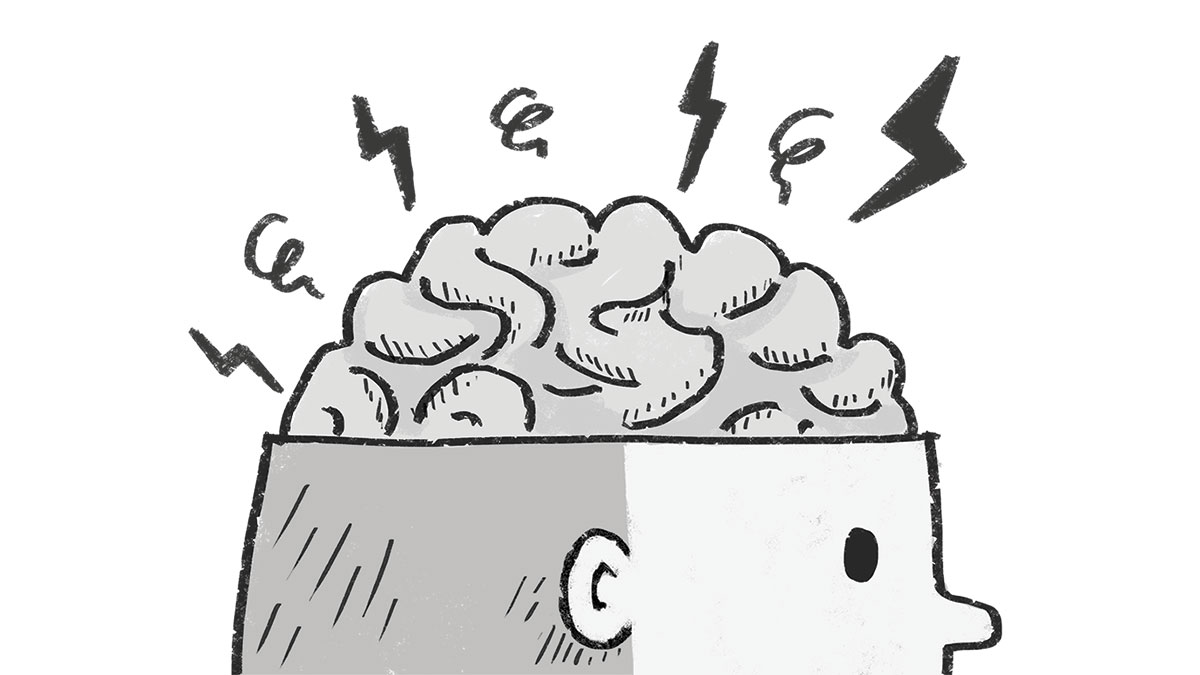 Jessica Hong
Jessica HongIt was a fairly typical hockey play, not a hit from behind or an especially dirty play.
Robert Simunkovic was playing midget hockey when he was hit from the side by an opposing player, lost his balance, and fell headfirst into the boards.
“I remember going down and hitting the boards,” Simunkovic said. “The next thing I remembered, I was sitting in the locker room.”
This wasn’t Simunkovic’s first concussion, or his last, but it was the only one where he could recall the events leading up to it.
Simunkovic sustained his first concussion when he was 14 years old, but he didn’t know it at the time.
“I was confused. You think you just have a headache,” Simunkovic said. “I didn’t really think it was anything serious.”
Therein lies the mystery of concussions — they’re difficult to pin down, both for sufferers and researchers.
Despite the fact that Simunkovic has suffered several concussions, he still has difficulty discerning when he’s sustained one.
“It’s hard to say for me,” he said. “There were some times where I would hit my head, and not know I had a concussion until I saw a doctor.”
While Simunkovic said all of his coaches were understanding in regards to head injuries, he still believes there were instances when he should’ve taken more time to recover from a concussion.
“There was no time that I can remember where I sat out any significant length of time due to a concussion,” Simunkovic said.
This attitude was especially prevalent when Simunkovic was playing AAA hockey. For many young hockey players with professional aspirations, this time is crucial for impressing scouts and a player with professional aspirations can’t take any time off.
“It’s always tough at that time, because you’re at the point where you don’t want to miss any games,” he said. “You can’t really afford to take any time off for injuries, because you never know who could be watching you any given game.
“If you start taking time off, you start missing workout and training time.”
Carley Borza, a graduate student at the University of Alberta specializing in concussion research, admits there’s still a certain amount of uncertainty when it comes to researching concussions.
“When you get a concussion, you’re not going to be in an imaging facility right off the bat,” Borza said. “CT and MRI scans do not show damage typically when it comes to concussions.”
Concussions have seen a higher profile over the past few years, in no small part due to the plight of former NFL players who have sustained multiple concussions during their career. The case of Chris Borland of the San Fransisco 49ers sticks out especially, who retired this past offseason at the age of 24, after only one season due to concerns over the effects of multiple concussions.
This points to a trend of players being more mindful about the effects of concussions, which Borza has observed as well.
“With the research being done, and the knowledge translation starting to happen, people are starting to become more aware of the effects concussions have,” Borza said. “People are starting to factor this knowledge in when they’re making judgments about playing.”
Things were different not too long ago, however, as concussions more often fell victim to a sporting culture that emphasized playing through discomfort and pain.
Borza believes youth leagues could perform better in regards to managing players with concussions.
“Concussions are monitored differently at different levels. Peewee, bantam, midget and professional, there’s no uniform system,” Borza said. “I think there could be a better protocol put in place that all levels follow, which is something that the Alberta Concussion Association is actually working towards.
“We want to get everyone on the same page, so everyone is given the best care available.”
Borza also emphasized the importance of education in regards to managing concussions.
“We want to support and foster knowledge translation in regards to concussions, because that’s an area where we’re lacking currently,” she said. “Players, coaches, parents and teachers all need to be on the same page when it comes to monitoring concussions and their symptoms.”
With further education starting to permeate the ranks of youth sport, Borza believes there has been an increase in the amount of dialogue regarding concussion safety.
“I think it’s the way of the future, especially regarding youth levels of competition,” she said, referencing a recent rule that outlawed body checking at the Peewee level of hockey.
“The policy change was in response to this movement we’ve had recently regarding concussions is that they are a big deal, and they do need to be monitored.”
The monitoring of players has changed drastically in the last 10 years, Bears football head coach Chris Morris said.
When Morris played football in the 1990s for the Edmonton Eskimos of the CFL, if you got hit in the head, the worst-case scenario was the sideline staff would look at you and try to figure out if something was “off.” If it seemed serious they would take your helmet away. If not, you would just “play through it,” and if it felt like it was getting worse, the coaching staff would take you at the next stoppage of play.
That’s completely changed now.
“Back in the day, it was like smoking,” Morris said of concussions. “It wasn’t good for you, but nobody knew about it. There were guys who thought it was something they could play through and it was considered acceptable.”
But now, coaching staffs are more cautious, Morris said. Education on concussions has increased exponentially, and organizations, coaches and players now realize the possible effects they can have.
In the offseason, the entire coaching staff is mandated by the CIS to complete a concussion course outlining return to play protocols and safe contact. Players are then required to undergo a series of Sport Concussion Assessment Tool (SCAT) tests and baseline assessment tools. Those results are then used as a baseline for the rest of the season to define where a current player stands medically. When a player suffers a possible concussion, their condition is compared to that baseline.
“It’s night and day compared to 15 years ago,” Morris said. “Our whole staff is involved in the diagnosis of concussions. That’s not the case anymore, it’s a huge change for the sport.”
But even with advancements in concussion education, Morris realizes players still “want to get back in there.”
To help advance the prevention of concussions in sport, rule changes have been implemented in the CIS. The CIS recently redefined what it means to be a “defenceless player.” Morris, who sits on the CIS rules committee, helped push for total prevention of contact with a defenceless player, and any head contact in general. He added that organizations have a “moral obligation” to their players to make sure they aren’t harming themselves or compromising their health.
Morris said these rules could prevent further concussions from happening when combined with the education, research and awareness today.
“Back in my day, (concussions) was the equivalent of turning your ankle and it not feeling quite right,” Morris said. “That’s what’s changed. That’s the culture that needs to change in a lot of sports. We’re cautious. Any sort of brain trauma, we pull players first, ask questions later.”
This knowledge and awareness comes too late for Simukovic, who was diagnosed with a sixth concussion last year while playing Junior C hockey, and after consulting with a doctor, decided to hang up his skates.
“From what I understood, the doctor implied that if I got another concussion after this one, the effects could be more severe, even permanent.”
It was a tough decision to make for someone like Simunkovic, who had spent his entire life playing hockey up until this point.
“I grew up playing the sport, and when I quit, everything that I had worked toward kind of stopped. Not because I wanted it to, but because I had to.”
Hindsight is 20/20, and Simunkovic says he would’ve approached things differently if given a second chance.
“If I knew more, I would’ve been more cautious at the beginning, I would’ve taken more time off and more time to recover,” he said. “There were times when I definitely came back too soon, or didn’t even take time off period.”
Today, after numerous diagnosed and undiagnosed concussions, Simunkovic lives what many people would consider a normal life. He studies engineering at NAIT, and even though competitive hockey is out of the question, he still jogs and walks to stay active. He’s able to do prolonged physical activity without pain or discomfort, but despite this, he probably won’t be getting back into contact hockey any time soon.
“I’ll probably be sticking to shinny from here on out.”

